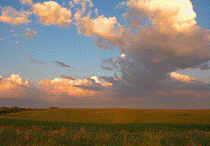North American Prairie Conference
Date of this Version
1989
Document Type
Article
Abstract
Mead's milkweed (Asclepias meadii Torrey) is a plant of virgin prairies, whose pre-settlement range included much of the midwest. It is now a rare plant confined to prairie hay meadows, railroad rights-of-way, prairie preserves and pioneer cemeteries. Studies of approximately a hundred individual plants, producing hundreds of flowering and sterile stems, in the wild and in cultivation for seven years (1965-1971) indicated that it was a moderately-sized plant whose stems averaged 56 cm in height with sagittate sessile leaves with a herringbone arrangement of the veins. In late May to early June a mature stem produced a solitary, terminal, nodding umbel with an average of 12 flowers. Pollination was by digger bees (Anthophora spp.) and bumble bees (Bombus spp.). Approximately 6.4% of the flowering stems produced a long narrow pod averaging 12 cm in length and 1.3 cm in diameter with approximately 60 seeds per pod. Seed germination was relatively low (47.6%). Some plants in virgin prairies and in cultivation were over a quarter century old, and indications are they may live for a century or longer. In contrast to most milkweeds, the seedlings were difficult to grow. Four or more years were usually required to reach maturity. Like most milkweeds, a number of insects were associated with the plant. Most damaging were the larvae of the milkweed beetles (Tetraopes spp.) and milkweed weevils (Rhyssematus spp.) that fed on the roots and the adult weevils that girdled the peduncle causing the eventual collapse of the terminal umbel.



Comments
Published in Prairie Pioneers: Ecology, History and Culture: Proceedings of the Eleventh North American Prairie Conference, August 7-11, 1988, Lincoln, Nebraska (Lincoln, NE 1989).